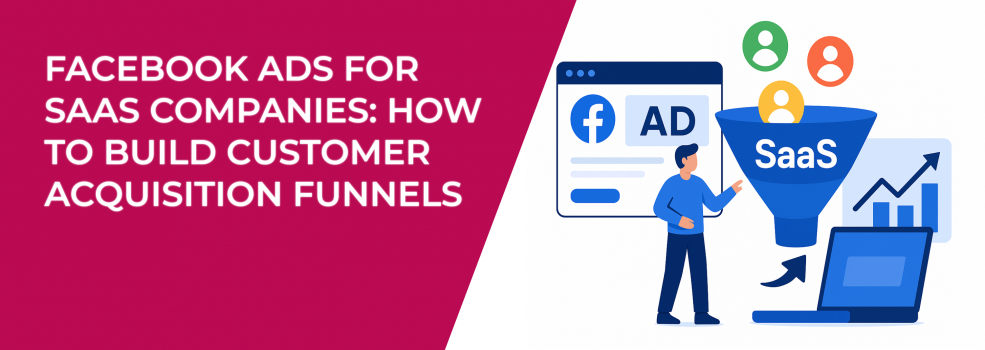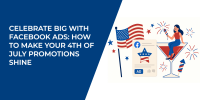If you're a SaaS company looking to grow, Facebook Ads can be a game-changer. With millions of users, Facebook provides the perfect platform to reach the right audience at the right time. But, with so many businesses competing for attention, how can you make sure your SaaS product stands out? The key is creating a strong customer acquisition funnel.
By using Facebook Ads to guide potential customers from awareness to decision-making, you can turn casual interest into loyal, paying users. But how do you do it? Let's break it down step by step and show you how to build an effective Facebook Ads funnel that brings in results.
Understanding the customer journey
Before jumping into Facebook Ads, it's essential to understand how your customers think and act. The customer journey isn’t always straightforward, especially for SaaS products. People may enter your funnel at different stages, from being completely unaware of your product to ready to buy.
Here’s a quick breakdown of the three main stages of the customer journey:
-
Awareness: this is when potential customers first hear about your product.
-
Consideration: at this stage, leads are interested and want more information before making a decision.
-
Decision: these leads are close to converting into paying customers, and your job is to seal the deal.
Understanding where your audience is in this process will help you tailor your Facebook Ads for maximum impact. Let’s dive deeper into each stage.
Stage 1: Awareness – grab attention with engaging ads
At the top of your funnel, your goal is to get noticed. Most people don’t know they need your SaaS product yet, so your Facebook Ads should capture their attention and make them curious.
Here are a few tips for creating awareness ads:
-
Highlight the problem: focus on a pain point that your audience can relate to. If they’re overwhelmed by manual work, show how your product can make things easier.
-
Keep it simple: avoid going into too much detail. The goal is to grab attention, not overwhelm the viewer with information.
-
Show the benefit: instead of focusing on features, emphasize how your SaaS product can make life easier or solve a problem.
For example, if your SaaS product helps businesses manage projects more efficiently, your ad could say, "Struggling with deadlines? Let’s help you stay on track." This simple message addresses a common pain point without asking for anything in return.
Video ads work wonders at this stage. A quick, engaging video demonstrating how your product works or showing a customer using it can make a lasting impression. Keep it short—15 seconds is often enough to spark interest.
And don’t forget a clear call to action (CTA). A simple “Learn More” or “See How It Works” will guide users to your website or landing page for more details.
Stage 2: Consideration – build trust and educate
Now that people are aware of your product, it’s time to nurture those leads. In the consideration stage, your goal is to show potential customers how your SaaS product can solve their problems and make their lives easier.
Here’s how to move people from awareness to consideration:
-
Retarget with value: use Facebook’s retargeting to show ads to people who interacted with your awareness ads or visited your website.
-
Share helpful content: provide more detailed information like case studies, blog posts, or videos that explain how your product works and what makes it different.
-
Use social proof: show real customer testimonials or success stories. People trust the experiences of others, especially when making a big decision.
For example, if someone clicked on your awareness ad but didn’t sign up, you can show them a new ad like: "See how Company X improved their efficiency by 30% using [Your Product]." This type of ad helps build trust by showing that real businesses are already benefiting from your tool.
At this stage, you can also offer lead-generation ads. Giving away something valuable, like a free eBook, webinar, or free trial, can help you collect email addresses and continue engaging leads.
If you're unsure about how to build an effective email list through Facebook ads, check out our guide on how to use Facebook Ads to build an email list.
Stage 3: Decision – convert leads into paying customers
This is the final stage — when potential customers are close to making a decision. Your job now is to make the final push and get them to sign up or purchase your SaaS product.
To optimize your ads in the decision stage:
-
Offer a special deal: give prospects a reason to sign up now. A limited-time discount, free trial, or bonus feature can motivate them to take action.
-
Create urgency: add urgency with phrases like "Sign up now to get 20% off your first month!" or "Limited-time offer!"
-
Use a strong CTA: make it easy for people to act. Simple CTAs like “Start Free Trial” or “Sign Up Now” encourage immediate action.
-
Reassure with social proof: include customer testimonials, success stories, or reviews to give prospects the confidence to commit.
For example, if someone has clicked on your pricing page but hasn’t signed up yet, you can retarget them with an ad that says, “You’re just one step away! Get started with a free trial today and see how it works.”
Personalization is key at this stage. Tailor your ads based on the user’s past interactions with your brand. For example, show a specific ad to someone who has visited your pricing page versus someone who has signed up for a free trial.
For a deep dive into how to reach the right people, check out our guide on Facebook Ad Targeting 101.
Track and analyze your results
To make sure your Facebook Ads are working, you need to keep track of key metrics. Facebook provides detailed analytics that can help you understand what’s working and what’s not.
Here are some important metrics to track:
-
Click-Through Rate (CTR): this tells you how many people clicked on your ad. A high CTR means your ad is engaging.
-
Cost Per Click (CPC): this shows how much you’re paying for each click. If it’s too high, it might be time to adjust your targeting or creative.
-
Cost Per Acquisition (CPA): this shows how much you’re paying to get a customer. You want to keep this as low as possible while maintaining quality leads.
-
Return on Ad Spend (ROAS): this metric shows how much revenue you’re earning for every dollar spent on ads. A high ROAS means your ads are profitable.
If you notice that your CTR is low or your CPA is high, it might be time to adjust your ad copy or targeting. Keep testing and experimenting to improve your performance.
We also have strategies to help you fix common issues — check out this article on why your Facebook ads aren’t generating leads and how to fix it to troubleshoot and improve your campaign.
Retargeting – bring back lost leads
Not everyone will convert the first time they see your ad, but that doesn’t mean they’re lost. Facebook’s retargeting feature allows you to stay in front of leads who showed interest but didn’t take the final step.
Here’s how to retarget effectively:
-
Segment your audience: create custom audiences based on actions they’ve taken, such as visiting your website or engaging with your ads.
-
Show personalized ads: if someone visited your pricing page but didn’t sign up, you can serve them ads highlighting your product’s benefits or offering a limited-time discount.
-
Keep it relevant: don’t overwhelm users with too many ads. Keep your messaging fresh and relevant to what they’re interested in.
For example, if a user clicked on an ad but didn’t complete the sign-up process, you can show them a new ad saying, “Still thinking about it? Get 20% off your first month if you sign up today.”
If you're unsure where to start, our guide on setting up Facebook retargeting will walk you through the process.
The final word
Building a successful Facebook Ads funnel is an ongoing process. As you gather more data, you’ll need to keep refining your approach. Testing new ad creatives, adjusting your targeting, and experimenting with different offers will help you keep improving your results.
The key is to be patient and keep learning. The more you optimize, the better your Facebook Ads funnel will perform. Track your results, test new ideas, and adjust your strategy based on real-time data. Over time, your funnel will become more efficient, and your customer acquisition costs will decrease.

